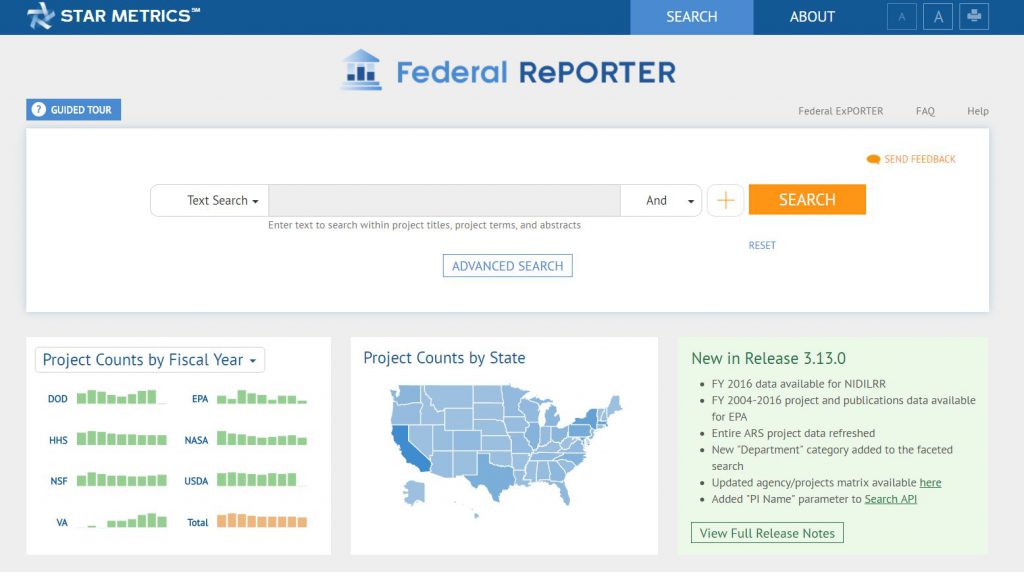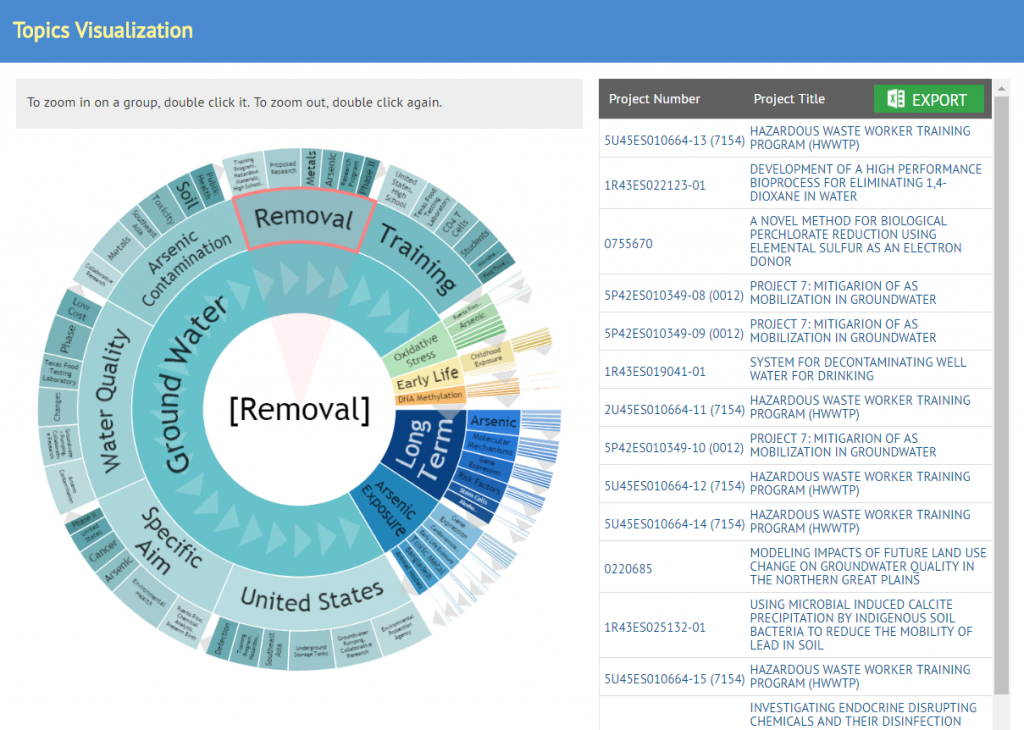2 Comments
Working with NIH applicants and awardees as an extramural program division director, I often shared the NIH RePORTER resource as a tool for exploring the research topics NIH supports. Learning what projects we support, using a robust database of historical and newly-funded projects (updated weekly), provides researchers valuable insight as they consider developing their own research programs and applications for funding.
Another valuable tool which you might be familiar with is Federal RePORTER, which expands the RePORTER concept to support searching over 800,000 projects across 17 Federal research agencies, with trans-agency data updated annually. As Federal RePORTER recently received an update to introduce some new functions and additional agency data we’d like to highlight some of the ways it helps both the public and scientific researchers alike understand the government’s research portfolio and trace its impact through published articles and patents.

Search or browse data across agencies: Federal RePORTER is designed for ease-of-use. The homepage offers quick search tools for the most commonly used fields, or you can skip the search and use the interactive bar charts and maps on the home page to quickly drill down to projects funded by a certain agency or projects occurring in a particular state. We’ve also added easy-to-follow walkthroughs as “Guided Tour” links on the home page, advanced search page, and results page to learn more. From your search results, you can refine results through links on the sidebar, or read more about individual projects (including a description, and details on the investigator, research organization, and funder.)



Explore search results even further: As with NIH RePORTER, you can export the results for further exploration and analysis, or use the built -in “Charts”, “Map”, or “Topics” tools from the sidebar to learn more about the projects, as in the examples shown below. For example, you can summarize the projects by agency, state, or fiscal year (Figure 2), or map where the research is taking place (Figure 3). You can also explore groups of scientific topics within your search results (for example, a search for “lead” and “drinking water” returns groups of projects covering “ground water”, “ early life”, “arsenic exposure”, and more.) From there, you can drill down into subgroups, to generate lists of projects in that group (Figure 4).
Identify research outcomes: Federal RePORTER aims to link Federal funding to the outcomes of research including publications and patents. Using agency-supplied information, the public can trace the impact of the funding by seeing what academic publications and patents cited the project funding.
With growing resources for identifying agency-supported publications, future plans include expanded coverage of these two important measures of research impact.
These are just a few of the excellent Federal RePORTER features that can help you find collaborators, get to know the research interests of federal science-funding agencies, understand your institution’s sources of support, and prepare your applications and research plan equipped with additional knowledge. We are grateful to all of the federal agencies and offices that provide data and support to Federal RePORTER and make this resource possible. These new functions, additional agency data, and modernized user interface make it easier for you – and all stakeholders in the U.S. scientific enterprise – to learn about the Federal science and engineering portfolio.



I think we need to be really cautious about GSI and we can’t lump basic science grants with clinical trial and human cohort studies. Clinical human studies and trials cost so much more and are necessary to make a dent in treating, curing, and preventing disease. To limit some of the best scientists based on $$ amount and not taking into account that a U01 wheee the PI only draws 10-15 percent salary support will wipe out the best science. A Clinical Research physician scientist PI needs several of these or he or she drowns in the demands of clinical work because he or she can’t support himself.
Clinical research programs involve teams and support teams of junior investigators. One can’t go by $$ alone and so what I have seen of the system proposed I strongly oppose.
No one tries to hoard money. Scientists and senior investigators bust themselves building programs that support teams and the peer review system with PI effort as stands already limits ovwrcommitment.
Please make sure the clinical
Physician scientist ( a dying breed) who understand clinical trials and clinical studies is involved on any rash changes to the system that could wipe out discovery translating mechanistic or translational findings to real treatments and cures in humans.
I agree with these points. Be careful with the measurement instrument you choose as it could have some very negative consequences.